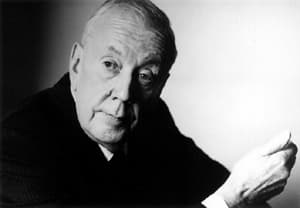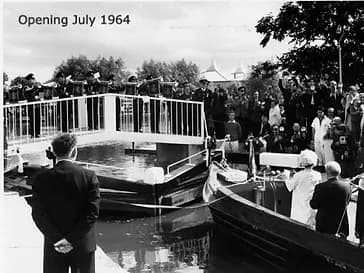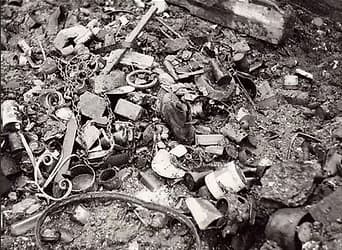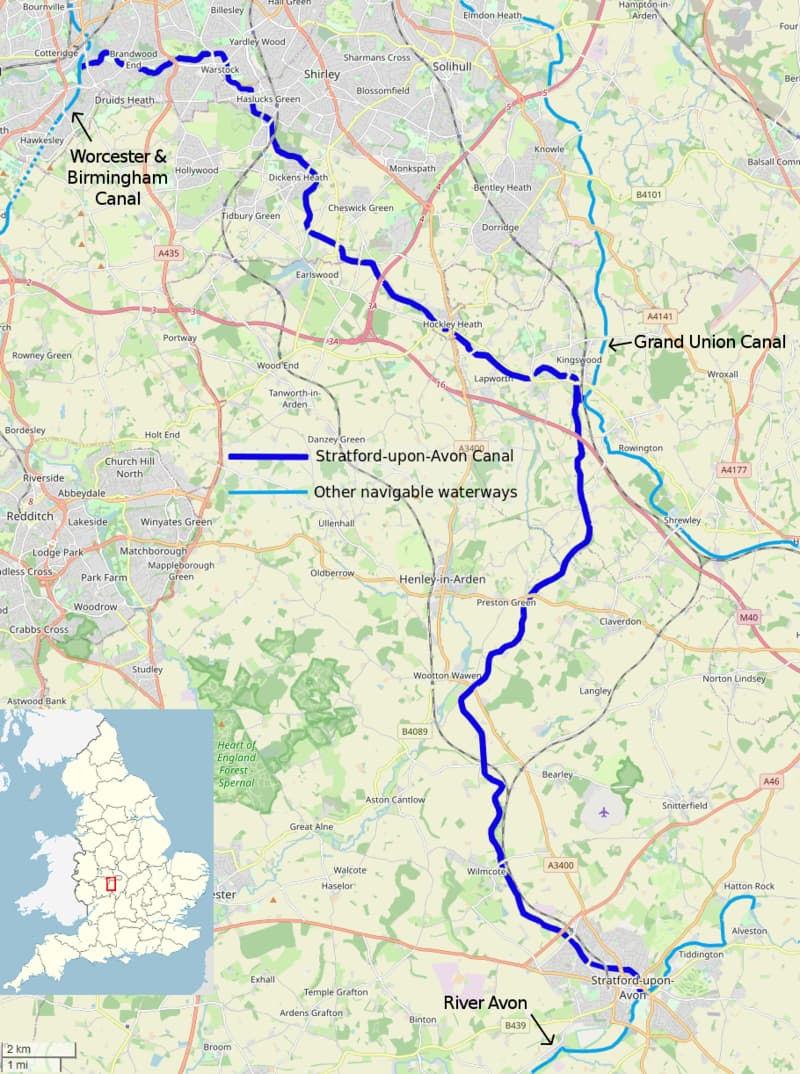Malcolm Arnold (1921–2006) was a master of the English light classics and wrote a great deal of his music for that ultimate British ensemble, the brass band, and he himself played the trumpet.

Sir Malcolm Arnold (seated) with harmonic player Larry Adler, 1954 (National Portrait Gallery)
In 1964, he was commissioned by the National Trust for music for the re-opening of the Stratford Canal, to be performed on a barge where the Canal meets the River Avon.

Opening of the canal, July 1964, with Her Majesty Queen Elizabeth the Queen Mother doing the honours (Stratford upon Avon Canal Society)
The Stratford Canal, or, more properly, the Stratford-upon-Avon Canal, was built between 1793 and 1816 and has a length of about 25 miles. As trains became more common, the canal fell into disuse, and the southern section was deemed un-navigable by 1945 when several of its locks couldn’t be operated, and part of the canal had gone dry; its northern section was little better.

Rubbish from the dredging project
Starting in 1947, the Inland Waterways Association fought to restore the integrity of the northern section, which, in one case, required a railway bridge to be raised to allow boats to pass. The closed southern section was taken up in 1961 by the Stratford Canal Society under David Hutchings, and, after three years of work dredging, restoring the canal walls and lock structures, and upgrading the system, succeeded in opening the canal in 1964. At the canal’s midpoint, it meets the Grand Union Canal, the principal navigable waterway between London and the industrial midlands.
Reports of the opening day, with the performance of Arnold’s music by the City of Birmingham Orchestra, say that the pontoon raft that the orchestra used kept floating away. Another item on the program, the 1812 Overture, was augmented by Royal Artillery cannon fire.

Map of the Stratford-upon-Avon Canal
Clearly, when writing music to be played on the water, Handel’s two great Water Music suites, HWV 348 and 349, of 1717, will be in the composer’s mind.
The work opens in imitation of Handel’s Overture from his first Wassermusik suite (HWV 348), which was written in the dotted rhythms of the French overture of his day. Arnold picks this up and then combines it with a water-like rising-and-falling motive. Brass, especially trumpets reinforced with percussion, is the core of the movement.
Malcolm Arnold: Water Music, Op. 82 – I. Allegro maestoso (Royal Northern College of Music Wind Orchestra; Clark Rundell, cond.)
The second movement takes the siciliana dance and combines its rhythms with a typically Arnoldian melody. The tune, wistful and longing, uses the full variety of orchestral textures and colours for its presentation. The rising-and-falling motif continues as well.
Malcolm Arnold: Water Music, Op. 82 – II. Andantino (Royal Northern College of Music Wind Orchestra; Clark Rundell, cond.)
The final movement, also based, as was so much of the original Wassermusik, on dance rhythms, first starts with a brass and percussion fanfare. Then, the melody develops in the lower brass, with the woodwinds providing the whirls and flourishes around it.
Malcolm Arnold: Water Music, Op. 82 – III. Vivace (Royal Northern College of Music Wind Orchestra; Clark Rundell, cond.)
The music doesn’t have the weight of Handel’s suites, written nearly 250 years earlier, and it wasn’t repeated multiple times as King George I requested of Handel, but it does provide a pleasant piece of commissioned music to restore a lovely waterway.
For more of the best in classical music, sign up for our E-Newsletter
